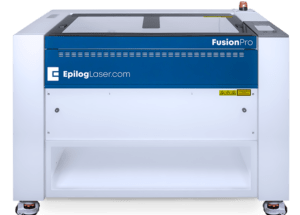EPILOG FUSION PRO 36

ABOUT
The Fusion Pro 36 feature Epilog’s IRIS™ Camera System with Positioning and Registration cutting features gives laser operators a live-preview of the engraving table so they can quickly and accurately position their artwork on even the most uniquely shaped items.
Maximum material size: 36″ x 24″ (914 x 610 mm)
Maximum engraving thickness: 228 mm
Laser source: 100 watt CO2 laser source
File Types: .ai / .svg / .dxf or any other vector file
Video tutorial:
for more information, check out our: Step by step tutorial
POLICIES:
- The laser cutter must always be operated under the supervision of staff, fellow or faculty.
- The laser cutter must be watched at all times during operation.
- Laser processing can cause fires or release of deadly gasses, thus materials not explicitly listed under the Materials section as approved for cutting need to be approved by the lab manager.
MATERIALS:

- Acrylic and birch plywood are available.
- You may bring your own materials to cut, but they must be approved by the lab manager.
- Anodized metals can be engraved, but bare metal cannot be engraved or cut.
- The follow materials are not allowed:
- PVC or any plastics containing vinyl
- Polystyrene foam (Styrofoam)
- Polycarbonate (PC)
- Foam-core board
- Mirrored surfaces (except mirrored acrylic designed for laser cutting)
KERF AND TOLERANCE
Laser burns material away!
If you intend to have fitting pieces or use gears that engage with each other, you want to consider how precise your tolerance needs to be.
We called this “KERF” or how much material the laser cutter burns away when cutting specific materials.
For example, if cutting a 3mm Plywood, usually KERF is about 0.15mm.
If I draw a square exactly 50mm, the resulting hole will be 50.15 mm and the resulting piece will be 49.85 mm.
Check our material guidebook to find the KERF for each material available in the FabLab or check this Instructables to learn how to calculate the KERF by yourself.